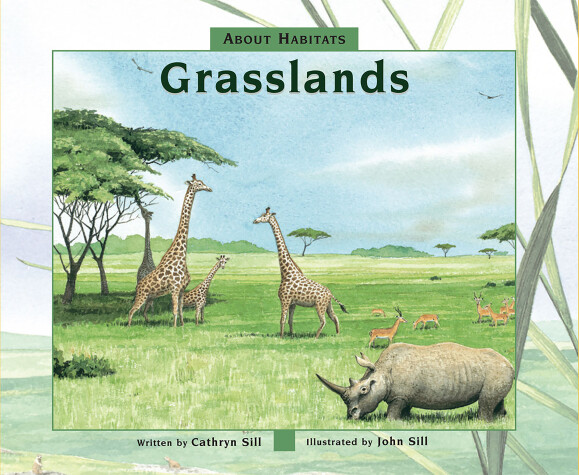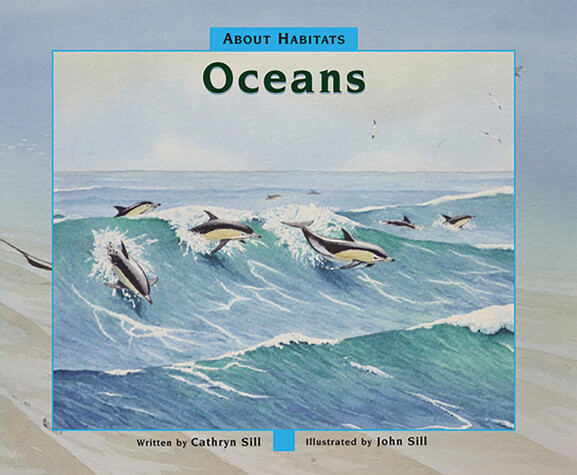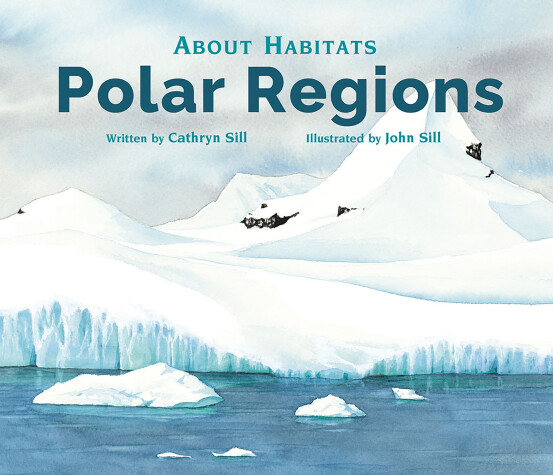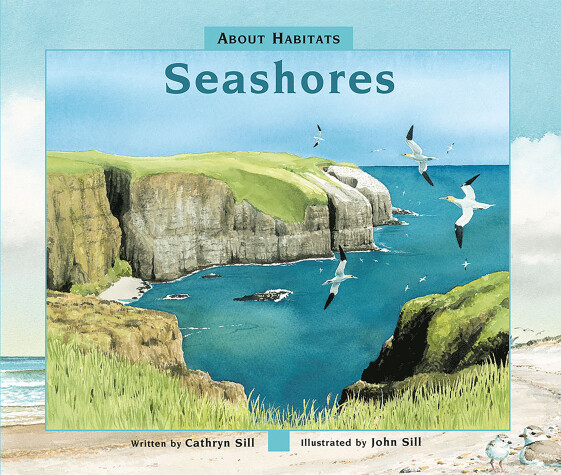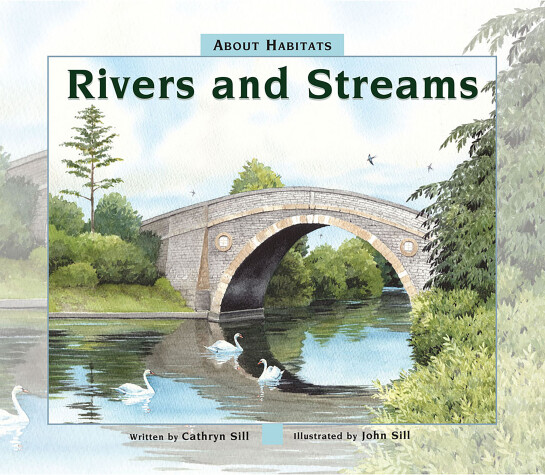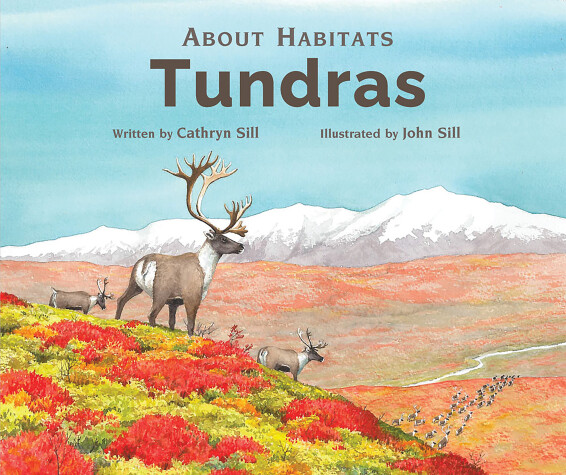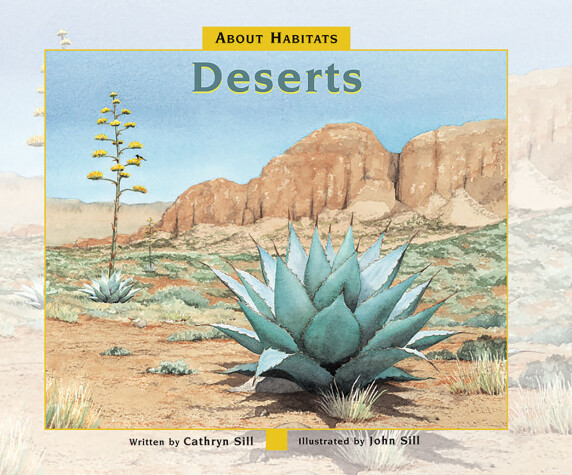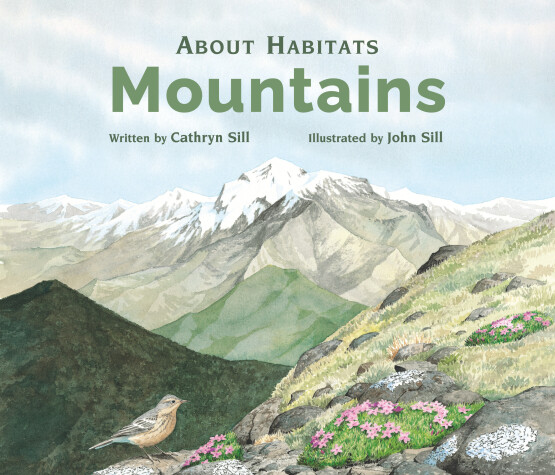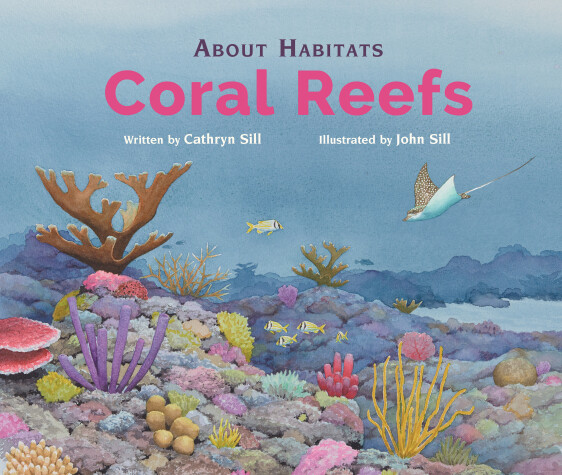About Habitats
7 primary works • 12 total works
Book 4
This book uses simple, easy-to-understand language to teach children what grasslands are and what kinds of animals and plants live there.
Noted wildlife illustrator John Sill offers detailed, full-color illustrations to depict the diversity of grasslands—from the North American tallgrass prairies to African savannas—and the wide variety of the plants and animals that live there. A glossary and afterword provide further details to inspire more learning.
Perfect for early childhood and elementary units on geography, environment, and nature.
Book 5
In simple, easy-to-understand language, author and educator Cathryn Sill teaches children what oceans are, what kinds of animals and plants live there, and why oceans are important.
Noted wildlife illustrator John Sill offers beautifully detailed paintings that depict the characteristics of different types of oceans—from the Arctic to the Indian Ocean. A glossary and afterword provide readers with further details.
Ideal for casual exploration or for early childhood and elementary science units.
Book 6
The author, an educator by training, uses simple, easy-to-understand language to teach children what forests are and how various species of animals and plants have adapted to life in these habitats.
Noted wildlife illustrator John Sill offers detailed, full-color illustrations to show the characteristics of different types of forests—from the cold boreal forests of the northern hemisphere to the warm tropical forests near the equator—as well as the animals and plants that live there. A glossary and afterword provide further details.
Book 7
Author and former early education teacher Cathryn Sill uses simple, easy-to-understand language to teach children what the Polar Regions are—from the frozen deserts of Antarctica to the ice floes of the Arctic Ocean—along with what kinds of animals and plants live there, how they have adapted to life in this environment, and why they're important.
Noted wildlife illustrator John Sill offers full-color illustrations depicting the various landscapes and species of animals and plants. A glossary and afterword provide more details for further study.
Great for early childhood and elementary units on geography and habitats, nature and environment.
Book 8
In this accessible introduction to a familiar locale, author and educator Cathryn Sill uses simple, easy-to-understand language to teach children about seashores and their diversity, the types of animals and plants that live there, and why they're important.
The stunning paintings by noted wildlife illustrator John Sill depict the wide variety of seashore topography. A glossary and afterword provide more details about each seashore featured in the book.
Perfect for early childhood and elementary units on nature, environment, and ecosystems.
Book 9
Author and illustrator team Cathryn and John Sill offer an accessible introduction to rivers and streams, touching on their major attributes, the animals and plants that live there, and their remarkable global diversity.
Using simple, easy-to-understand language, the author teaches children what rivers and streams are and explains how various species of animals and plants have adapted to life in or along these waterways. Detailed, full-color art shows the characteristics of the world's different rivers and streams―from the mountain brooks of the Alps to the mighty Amazon River in South America. A glossary and afterword provide further details.
Great for casual exploration and for early childhood and elementary education units on nature, environment, earth sciences, and ecosystems.
Book 10
Author and educator Cathryn Sill uses simple, easy-to-understand language to teach children what tundras are, what kinds of animals and plants live there, and how certain species have adapted to the unique environment. The book covers the characteristics of Arctic, Antarctic, and alpine tundras.
John Sill's detailed, realistic paintings reflect the beauty and diversity of the habitat. A glossary and afterword provide more detail for further exploration.
Ideal for early childhood and elementary education units on biomes and environments, geography, habitats, and nature.
This beginner's guide to deserts explores the major attributes of the habitat and showcases its striking beauty and remarkable global diversity. For example, did you know that the Great Basin Desert is actually very cold?
The author, a former teacher, uses simple, easy-to-understand language to teach children what deserts are, what kinds of animals and plants live there, and how certain species have adapted to the unique challenges of surviving in this harsh environment.
Noted wildlife illustrator John Sill uses detailed, full-color illustrations to reflect the diversity of desert topography―from the vast dunes of the Arabian Desert to the rocky Chihuahuan Desert in the southwestern U.S. A glossary and afterword provide further details.
Perfect for early childhood or elementary units on geography and habitats, nature, and environment.
This beginner's guide to deserts explores the major attributes of the habitat and showcases its striking beauty and remarkable global diversity. For example, did you know that the Great Basin Desert is actually very cold?
The author, a former teacher, uses simple, easy-to-understand language to teach children what deserts are, what kinds of animals and plants live there, and how certain species have adapted to the unique challenges of surviving in this harsh environment.
Noted wildlife illustrator John Sill uses detailed, full-color illustrations to reflect the diversity of desert topography―from the vast dunes of the Arabian Desert to the rocky Chihuahuan Desert in the southwestern U.S. A glossary and afterword provide further details.
Perfect for early childhood or elementary units on geography and habitats, nature, and environment.
This volume from the acclaimed About Habitats series uses simple, easy-to-understand language to teach children what mountains are and what kinds of animals and plants live there.
Noted wildlife illustrator John Sill provides stunning and realistic illustrations to depict the diversity of mountain landscapes―from the snow-covered peaks of the Himalaya Mountains to the forested slopes of the Appalachians. A glossary and afterword provide more details for further learning.
Perfect for early childhood and elementary units on geography, nature, and environment.
Wetlands are some of the world's most at-risk environments today. In this addition to the award-winning About Habitats series, author and educator Cathryn Sill explores the major attributes of wetlands and demonstrates their remarkable diversity using examples from around the globe.
She uses simple, easy-to-understand language to teach children what wetlands are, what kinds of animals and plants live there, and how wetlands help maintain the delicate balance of Earth's environments.
John Sill's detailed, full-color illustrations reflect the wide range of wetlands―from salt marshes to tropical mangrove swamps. A glossary and afterword provide further fascinating details about the wetlands, inspiring readers to learn more.
ABOUT HABITATS: CORAL REEFS is an engaging first glimpse into this unique habitat. In simple terms, author and former teacher Cathryn Sill explains what corals are and how reefs are built, describes the characteristics of some of the world’s major coral reefs, and highlights some of the many species of animals and plants that have adapted to life in these fragile environments. Detailed illustrations by award-winning wildlife artist John Sill depict a variety of coral reefs, from the Great Barrier Reef in the Pacific Ocean to the Red Sea Reef in the Indian Ocean. The colorful, detailed paintings bring the coral reefs to life for young naturalists.
A map, an afterword, and a glossary provide more detailed information about coral reefs in general and about the wildlife featured in the illustrations.
